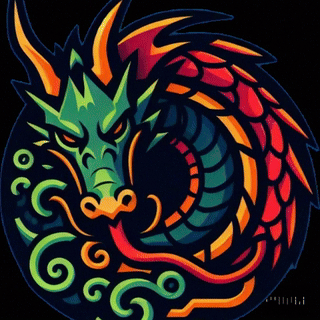Part 3: Osiris and the Mystery of the Afterlife
Alright, so imagine you’re living in ancient Egypt. The sun is blazing, the Nile’s flooding just right, and life seems to follow a rhythm you can count on. But there’s one thing every Egyptian is always thinking about—what happens after death?
Enter Osiris, the god who literally wrote the book on dying and coming back better than ever.
Osiris: The King Who Was Loved
Long before Osiris became the god of the dead, he was a king. And not just any king—he was the ideal king. Wise, kind, noble. He ruled the earth with fairness and brought civilization to a wild, chaotic land. He taught people how to farm, gave them laws, and helped establish balance—Ma’at—in every corner of the kingdom. His sister and wife, Isis, was right there by his side, just as magical and powerful.
People loved him. The gods respected him. Life was good.
But, of course, this is mythology… and peace never lasts long.
Set’s Jealousy and the Ultimate Betrayal
Enter Osiris’s brother, Set—jealous, fiery, and full of resentment. While Osiris ruled the green and fertile lands, Set was stuck out in the barren red desert. He was the god of chaos, storms, and wildness. And he wanted the throne.
Set’s plan? Legendary. He threw a lavish feast, invited all the gods, and unveiled a stunning, custom-made coffin. It was carved to perfection, inlaid with gold and precious stones. The catch? It was built to fit exactly one person: Osiris.
Set, acting all casual, challenged the guests—"Whoever fits inside this beautiful box gets to keep it!" Everyone tried. No one fit. Until Osiris climbed in, smiling, unaware.
SLAM.
The lid came down. Nails were driven in. The whole thing was sealed tight and thrown into the Nile. Just like that, the king of the world was gone.
The Grief of Isis
Isis was devastated. But she wasn’t about to let her beloved be forgotten. She set off on a journey filled with danger, determination, and powerful magic to find Osiris’s body.
Eventually, she tracked the coffin down in a distant land, hidden inside the trunk of a massive tree that had grown around it. She brought him back to Egypt, but Set wasn’t done. When he found out, he went next level psycho—he tore Osiris’s body into fourteen pieces and scattered them across the land.
But Isis? Oh, she wasn’t giving up.
She gathered every piece, one by one. With the help of her sister Nephthys, wise old Thoth, and jackal-headed Anubis, she reassembled Osiris’s body. She even used her magic to briefly bring him back to life—just long enough to conceive their son, Horus.
Now that’s love. That’s power.
Osiris Becomes Lord of the Afterlife
Osiris didn’t return to rule the living. His journey had taken him elsewhere—to the Duat, the Egyptian underworld. But he didn’t just go quietly into the shadows. He became something greater. He transformed into the god of the dead, the eternal ruler of the underworld, and the symbol of rebirth.
Osiris wasn’t feared like other underworld gods in other mythologies. Egyptians didn’t tremble at his name. They hoped to meet him.
Why? Because Osiris wasn’t just death—he was what comes after. Growth, rebirth, continuation. He symbolized the eternal cycle. Just like the Nile floods and recedes, just like the sun sets and rises again, Osiris taught that death wasn’t the end. It was a new beginning.
He became the judge of souls—the one who would weigh your heart, check your deeds, and decide if you were worthy to live forever in the Field of Reeds, Egypt’s peaceful afterlife paradise.
The Weighing of the Heart
This is where Osiris’s role gets super interesting—and honestly, kind of poetic.
When someone died, their soul journeyed to the Hall of Ma’at, where they’d face the ultimate test. Anubis would lead them in. Their heart—the seat of emotion and morality—was placed on one side of a giant scale. On the other side? A single feather. The Feather of Ma’at.
If your heart was light—unburdened by guilt, lies, cruelty—it would balance. You’d pass. You’d be welcomed into Osiris’s kingdom. Eternal peace, green fields, endless feasts.
But if your heart was heavy? Oof. The demoness Ammit, part crocodile, part lion, part hippo, was waiting nearby. She’d devour your soul in one gulp. Total annihilation. Not punishment—just... nothingness.
No second chances.
Osiris, seated on his throne, green-skinned to symbolize rebirth and fertility, would oversee it all. Calm, wise, fair. He didn’t rule through fear—he ruled through justice. That made him one of the most beloved gods in the Egyptian pantheon.
Symbols and Legacy
Osiris is often shown as a mummified king, with green skin and a tall white crown flanked by two feathers. He holds a crook and flail—symbols of rulership and agriculture, linking him to both kingship and the cycle of life.
His myth—death, dismemberment, resurrection—is echoed in rituals all across Egypt. Every year, festivals were held to reenact his story. His temples, especially the one at Abydos, became pilgrimage sites.
He wasn’t just the god of death. He was the promise that life continued. That love endures. That even when all seems lost, there is hope in what lies beyond.
So yeah, Osiris didn’t just change the mythological game—he became a blueprint for immortality. His story gave ancient Egyptians peace. Purpose. And the courage to live well, knowing death wasn’t the end of their story.
Ready to meet the woman who made that miracle possible? Because Part 4: Isis – The Enchantress of Magic and Motherhood is where the magic really begins.
480-366-3550 (Domain Sales)
© SDBEST LLC, 2025. All rights reserved.
Sponsorship Disclosure
Terms of Service
